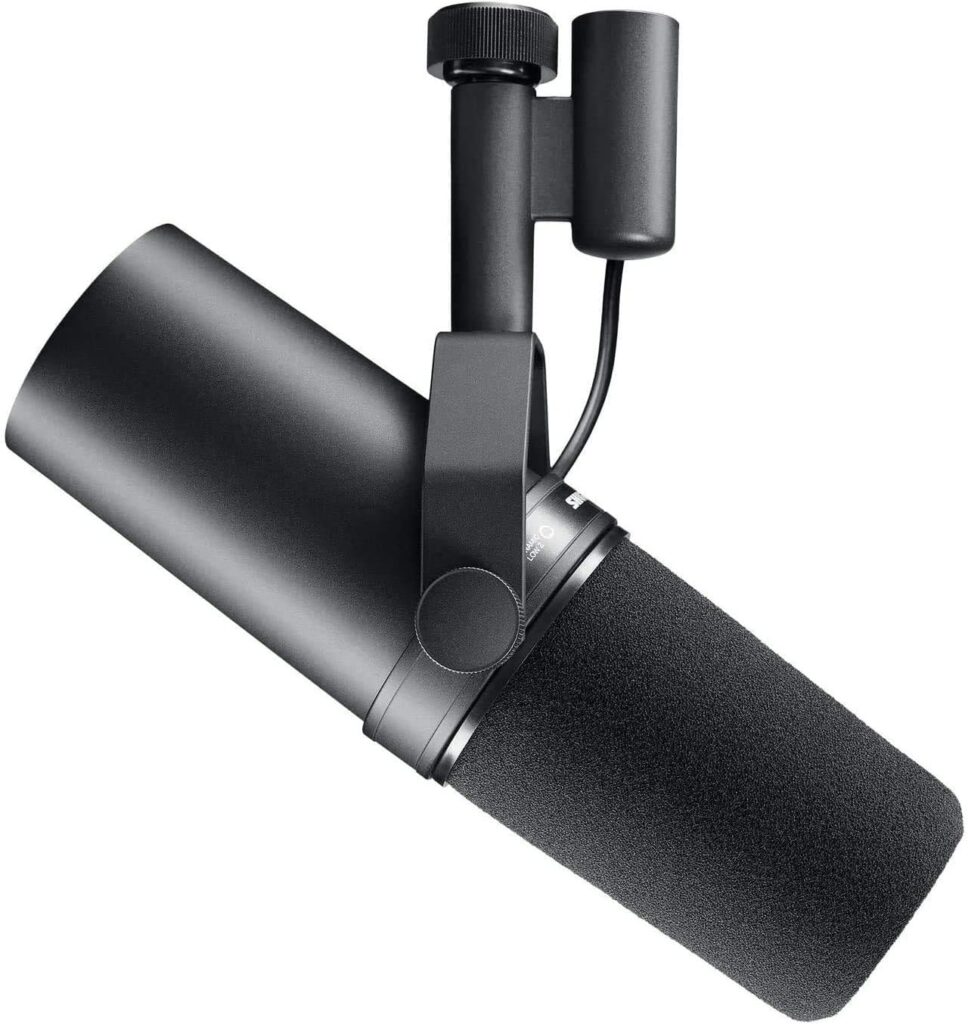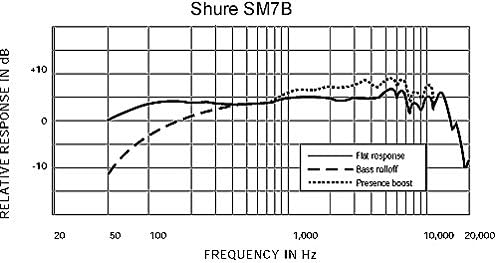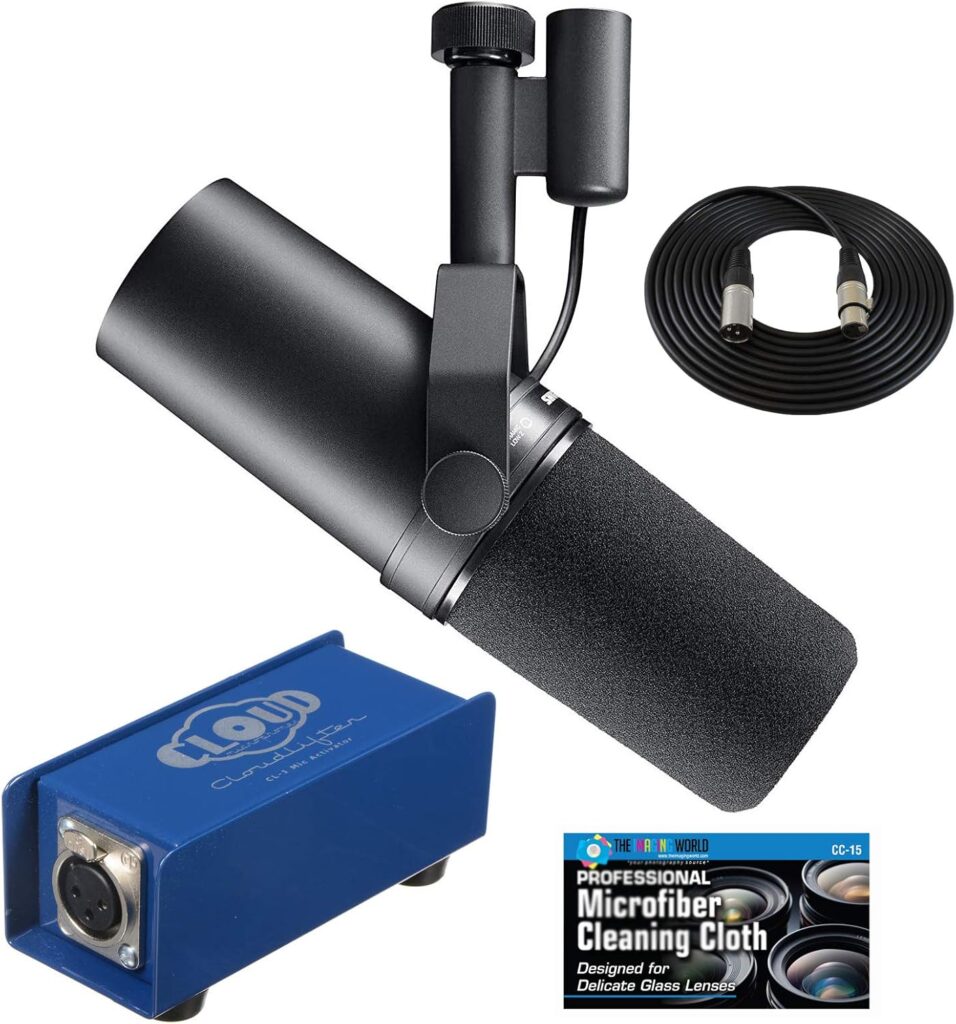Shure SM7B Review
The Shure SM7B is more than just a microphone—it’s a cultural artifact in the audio world. Since its predecessor, the SM7, debuted in 1973, and with the refined SM7B arriving in 2001, this dynamic microphone has cemented its place in recording studios, podcast booths, and broadcast stations worldwide. From Michael Jackson’s pristine vocals on Thriller to Joe Rogan’s commanding podcast presence, the SM7B has a resume that few can rival. As of 2025, it remains a top choice for professionals and enthusiasts alike. But what makes it so special? In this review, we’ll explore its design, sound quality, features, applications, value, and competition to determine why it’s still a legend—and where it might not fit the bill.
Design and Build Quality
The Shure SM7B is a study in rugged elegance. Weighing 1.69 lbs (765 grams) and measuring 7.47 inches long, it’s a substantial piece of equipment, built with a steel and aluminum chassis that feels indestructible. The matte black finish is understated yet professional, making it a visual fit for any setup—be it a sleek podcast studio or a cluttered home office. Shure’s attention to durability is evident: there are no flimsy plastic components to crack or fade, and the yoke mounting system offers robust, adjustable positioning. This yoke, paired with a threaded nut, ensures compatibility with most boom arms and stands, a practical touch for long recording sessions.
The SM7B comes with a detachable A7WS windscreen, designed to reduce plosives, and a switch cover plate to prevent accidental toggling of its rear controls. The internal shock mount is integrated into the capsule, minimizing handling noise and vibrations—a feature that proves its worth when a desk gets bumped mid-take. On the back, two switches allow for bass roll-off and mid-range presence boost, housed in a recessed panel that’s both accessible and unobtrusive.
While the design is near-flawless for its purpose, there are minor quibbles. The stock windscreen, while effective, doesn’t fully eliminate plosives during close-mic vocal work—many users pair it with an external pop filter for pristine results. At 1.69 lbs, it’s also not the most portable mic, requiring a sturdy stand or arm (like the Rode PSA1) to avoid tipping. These are small trade-offs for a microphone built to endure decades of use, but they’re worth noting for mobile creators or those in cramped spaces.
Sound Quality: The Heart of the SM7B
The SM7B’s sound is its calling card. As a dynamic microphone with a cardioid polar pattern, it captures sound directly in front of it while rejecting noise from the sides and rear. This tight pickup pattern is a godsend in untreated rooms or noisy environments, making it a favorite for podcasters and streamers who can’t afford acoustic panels. Its frequency response spans 50 Hz to 20 kHz, but the magic lies in its tailored curve: a gentle roll-off below 100 Hz to reduce muddiness, a smooth midrange for natural warmth, and a controlled presence peak around 5-6 kHz for clarity.
For vocals, the SM7B is unparalleled among dynamic mics. It delivers a rich, full-bodied tone that flatters a wide range of voices—deep baritones sound authoritative, while higher registers gain a polished sheen. The proximity effect, where bass boosts as you get closer, can be dialed in for that intimate, radio-DJ vibe or tamed with the bass roll-off switch for a flatter response. The presence boost switch adds a subtle lift in the upper mids, enhancing articulation without tipping into harshness. This makes it equally suited for spoken word and singing, with a sound that’s professional out of the gate, requiring minimal EQ in post-production.
Instrument recording is another strength. The SM7B can handle high sound pressure levels (up to 180 dB SPL with no pad), making it a go-to for miking guitar amps, snare drums, and even kick drums in a pinch. Its focused pickup ensures minimal bleed, ideal for live studio setups. However, it’s not the best choice for capturing the airy highs of acoustic guitars or the shimmer of cymbals—condenser mics like the Neumann U87 or AKG C414 excel there. The SM7B thrives on bold, upfront sources.
One technical hurdle: its low output impedance (150 ohms) and sensitivity (-59 dBV/Pa) mean it craves gain—typically 60 dB or more. Pairing it with a budget interface like the Focusrite Scarlett 2i2 (max 56 dB gain) can leave it sounding thin or noisy unless boosted with an inline preamp like the Cloudlifter CL-1 ($149) or Triton Audio Fethead ($79). With a high-quality preamp—say, a Universal Audio Apollo or Neve 1073—the SM7B sings, revealing its full depth and character. This gain requirement isn’t a flaw but a design choice, prioritizing durability and noise rejection over plug-and-play ease.
Features and Functionality
The SM7B keeps its feature set lean and purposeful. As a dynamic mic, it requires no phantom power, simplifying setup compared to condensers. The internal shock mount reduces mechanical noise, while electromagnetic shielding blocks hum from nearby monitors, phones, or Wi-Fi routers—a detail that shines in modern, gadget-filled studios. The rear switches offer practical tonal tweaks: the bass roll-off cuts rumble below 100 Hz (with a 6 dB/octave slope), and the presence boost adds a 3-4 dB lift around 5 kHz. These aren’t drastic changes—Shure avoids gimmicky EQ—but they provide enough flexibility to adapt to different voices or room conditions.
There’s no USB port, onboard DSP, or flashy LEDS. This is an analog tool built for purists who value raw performance over convenience. Its lack of frills might disappoint beginners expecting a modern twist, but for pros, it’s a refreshing focus on essentials.
Historical Context and Legacy
The SM7B’s story begins with the SM7, launched in 1973 as a broadcast and studio mic. Designed to compete with the Electro-Voice RE20, it gained fame when Quincy Jones chose it for Michael Jackson’s Thriller sessions in 1982—its ability to handle Jackson’s dynamic range cemented its legacy. The SM7B update in 2001 refined the windscreen and capsule, but kept the core intact, preserving its vintage soul while meeting modern demands.
Today, it’s ubiquitous. Podcasters like Joe Rogan and Tim Ferriss swear by it, as do musicians like James Hetfield, who used it for Metallica’s St. Anger. Its cultural cachet is unmatched—search X posts from March 2025, and you’ll find users praising its “buttery smooth” vocals and “bulletproof” build. This isn’t hype; it’s history in action.
Use Cases: Where It Shines (and Where It Doesn’t)
The SM7B’s versatility is staggering. Podcasting is its modern kingdom—its noise rejection and vocal warmth make it ideal for solo hosts or multi-mic setups, as seen on The Joe Rogan Experience. Broadcasting benefits from its consistency; radio stations use it for its ability to handle varied speech patterns. In music studios, it’s a vocal workhorse, capturing everything from soulful crooning to guttural screams, while also taming loud amps and drums.
Streamers and YouTubers love its professional sound, though its gain needs can intimidate newcomers without a solid audio chain. For live sound, it’s less common—its size and need for close miking make it tricky on stage—but it excels in controlled settings like radio booths or voiceover studios.
Where it falters: quiet sources. Whispered vocals or delicate fingerpicking lose detail compared to large-diaphragm condensers like the Rode NT1. It’s a mic for the bold, not the subtle.
Value and Competition
At $399 USD , the SM7B isn’t cheap. Add a $100-$150 booster, and you’re at $500-$550—a steep entry for hobbyists. Yet, its build quality, sound, and resale value justify the cost for pros. It’s a one-time buy that outlasts trends.
Competitors include:
- Electro-Voice RE20 ($449): Similar broadcast pedigree, less gain-hungry, but pricier and less warm.
- Audio-Technica BP40 ($349): A budget SM7B-esque option, solid but less refined.
- Rode PodMic ($99): Affordable, SM7B-inspired, but lacks the depth and durability.
- Shure MV7 ($249): USB/XLR hybrid for beginners, sacrificing some analog purity.
The SM7B’s edge is its proven track record and versatility. Cheaper mics cut corners; pricier ones (e.g., Neumann BCM 104) target niche markets.
Pros and Cons
Pros:
- Warm, rich vocal tone
- Superior noise rejection
- Tank-like build quality
- Versatile across vocals, instruments, and broadcast
- Iconic status with minimal post-processing needed
Cons:
- High gain requirement (preamp often needed)
- Stock windscreen needs a pop filter for close work
- Not suited for quiet or subtle sources
- Pricey for casual users
Conclusion
The Shure SM7B is a masterpiece of form and function. In 2025, it stands tall as a dynamic mic that blends vintage charm with modern reliability. Its warm, polished sound, rugged design, and noise-rejecting prowess make it a staple for anyone serious about audio—podcasters, musicians, broadcasters, and beyond. Yes, it demands a decent setup and a bit of investment, but the payoff is a microphone that delivers professional results for years, if not decades.
For beginners or those on a budget, alternatives exist. But for anyone ready to step up their game, the SM7B isn’t just gear—it’s a legacy. Whether you’re recording a hit song or a viral podcast, it’s a tool that grows with you, proving why it’s still the king of dynamic mics.




